
All Solutions

Explore all the solutions you can create with Paperform: surveys, quizzes, tests, payment forms, scheduling forms, and a whole lot more.
See all solutions











Connect with over 2,000 popular apps and software to improve productivity and automate workflows
See all integrationsProducts
Solutions
All Solutions

Explore all the solutions you can create with Paperform: surveys, quizzes, tests, payment forms, scheduling forms, and a whole lot more.
See all solutionsIntegrations

Connect with over 2,000 popular apps and software to improve productivity and automate workflows
See all integrationsResources
The 8 best recruitment automation tools

https://xobin.com/Hiring is tough. You feel pressured to find the best potential candidates, evaluate them effectively, manage the interview process, make a timely hiring decision, and get the best-fit applicant up to speed in their new role.
But hiring isn’t only difficult—it’s time-consuming. From writing job descriptions and posting them to numerous job boards to screening candidates and scheduling interviews, the hiring process is stuffed full of manual tasks that eat up a lot of your recruitment team’s time.
Here’s the good news: recruitment automation can help you offload some of those repetitive tasks and streamline your entire recruiting process.
TL;DR
- Recruitment automation tools streamline the hiring process by automating repetitive and time-consuming tasks, such as resume screening and scheduling interviews.
- They increase efficiency and speed up the time-to-hire, allowing organizations to make more informed hiring decisions in a shorter amount of time.
- They can also reduce the risk of human error and bias in the recruitment process, making it more fair and objective.
- The 8 tools listed below are Paperform, Papersign, LinkedIn Recruiter, Textio, Smartrecruiters, SourceWhale, and Pymetrics.
- Sign up for Paperform today to improve the candidate experience and automate your application process.
Want to automate your recruitment process?
Start your Paperform trial now—free for 14-days. No credit card needed.
| Tool | Features | Pricing |
|---|---|---|
| Paperform | Application forms, bookings, logic for filtering applicants, integrations | $24/m |
| LinkedIn Recruiter | Advanced search and sourcing, reporting, communication, candidate management | $170/m |
| Textio | Optimise job postings, write jobs faster, make jobs more compelling | On request |
| SmartRecruiters | Onboarding, applicant tracking, CRM, advertising, distribution, AI | On request |
| SourceWhale | Distribution, outreach, metrics, repeatable hiring processes | On request |
| Pymetrics | Gamified behavioural assessments, candidate insights, AI algorithms | On request |
| iSmartRecruit | Applicant tracking, AI algorithms, candidate insights, recruitment marketing | On request |
What is recruitment automation?
Recruitment automation is the process of using technology to automate different tasks and workflows in your recruitment process.
You could use recruitment automation tools to screen initial candidates, so your recruiters only have to look at a pile of the best applications and resumes. Or you might use recruitment automation technology to instantly schedule interviews, rather than having to manage all of the calendar comparisons with applicants.
There are seemingly endless use cases—and plenty of options for making them happen.
For example, there’s a huge variety of comprehensive recruitment software that will manage your entire hiring process from the beginning all the way to your employee onboarding process. And there are also more specialized tools that focus on a specific piece of the recruitment process and candidate experience, such as writing compelling job descriptions or handling cold outreach.
In any and all of those cases, the point of recruitment automation remains the same. It leverages technology to automate repetitive and menial tasks so that your hiring team has more time and mental energy to focus on what matters most: finding the ideal candidates for your open roles.
What are the benefits of recruitment automation?
A recent survey from the Society for Human Resource Management (SHRM) found that almost one in four organizations are already using automation or artificial intelligence (AI) to support recruitment and hiring—and that number is only expected to increase.
But why are organisations jumping on the automation bandwagon? Well, this technology offers a number of distinct benefits for businesses and recruiting teams.
1. Save time
You might guess that automating repetitive or mundane tasks would save time—and plenty of data backs this up.
In the same SHRM survey, 69% of HR professionals that use automation in hiring reported that it has significantly decreased the time spent on the hiring process. A separate study of recruitment firms found that automation saved 2.5 million employee hours in 2021, which was the equivalent of three hours each day per recruiter. Needless to say, the time savings are significant.
2. Reduce bias
Some automation users also claim that this technology helps them limit unconscious bias when screening and evaluating candidates, with 30% of respondents in the SHRM survey saying that the use of automation or AI reduces potential bias.
However, other studies are a little more sceptical about technology’s role in managing bias, particularly when many recruitment technologies still rely on demographics.
Even so, there are tools that can simply help you be more mindful of the language you use in your job descriptions and other employer marketing materials so you aren’t knowingly excluding applicants. Even if the point of completely reducing bias is a little contested, it’s still well worth experimenting with these tools to be more inclusive and open-minded.
3. Fill more jobs
Data shows that recruitment automation can actually help you fill more open roles. Staffing and recruitment firms that use automation have a whopping 64% higher fill rate for jobs.
How? Well, when different parts of the recruitment process are streamlined and automated, hiring teams have fewer bottlenecks and are able to get candidates through the pipeline far more efficiently than if they had to do everything manually.
4. Find better applicants
Of course, hiring isn’t strictly a numbers game. Recruitment technology doesn’t just help you engage more applicants, but also better or more highly-qualified applicants.
Automation gives recruiters more time and energy to focus on tasks that require more of a human touch like personalized candidate conversations and pre-hiring assessments. That means they can use their skills and training to zone in on and engage the best of the best, rather than wasting time and mental energy trying to separate the wheat from the chaff.
6 best recruitment automation tools to streamline your hiring workflows
It’s obvious that recruitment technology offers a ton of advantages for employers, which means it’s an area that’s rapidly growing. One quick search on Capterra for “recruitment automation” yields over 10,000 results.
Scratching your head wondering how you can possibly find the recruitment automation tools that are worth your time and attention? We’ve rounded up six of our favourites right here.
1. Paperform
basic job application form
Use it to: Manage job applications, interview requests, and other hiring paperwork.
Okay, so a form builder might not be the first thing that comes to mind when you think about recruitment automation, but Paperform really can remove a ton of manual work from a lot of your hiring workflows.
Need a few examples? You can use Paperform to:
- Create a job application form and easily connect it to any other hiring software you use.
- Use conditional logic in your job application forms to simplify the candidate experience and filter candidates automatically.
- Send qualified candidates an appointment form so they can book an interview (it’s easy to connect directly to your calendar)
- Connect to Slack to automatically receive a notification when someone schedules an interview, or share job applications that fit certain criteria only.
Any recruiter will readily admit that the hiring process comes with a lot of forms and paperwork—and Paperform can help you manage all of that information in a straightforward and systematic way.
Pricing: Paperform offers a 14-day free trial. After that, paid plans start at $24 per month or $240 per year.
Want to automate recruitment with smart forms?
Start your 14-day free trial now. No credit card needed.
2. Papersign
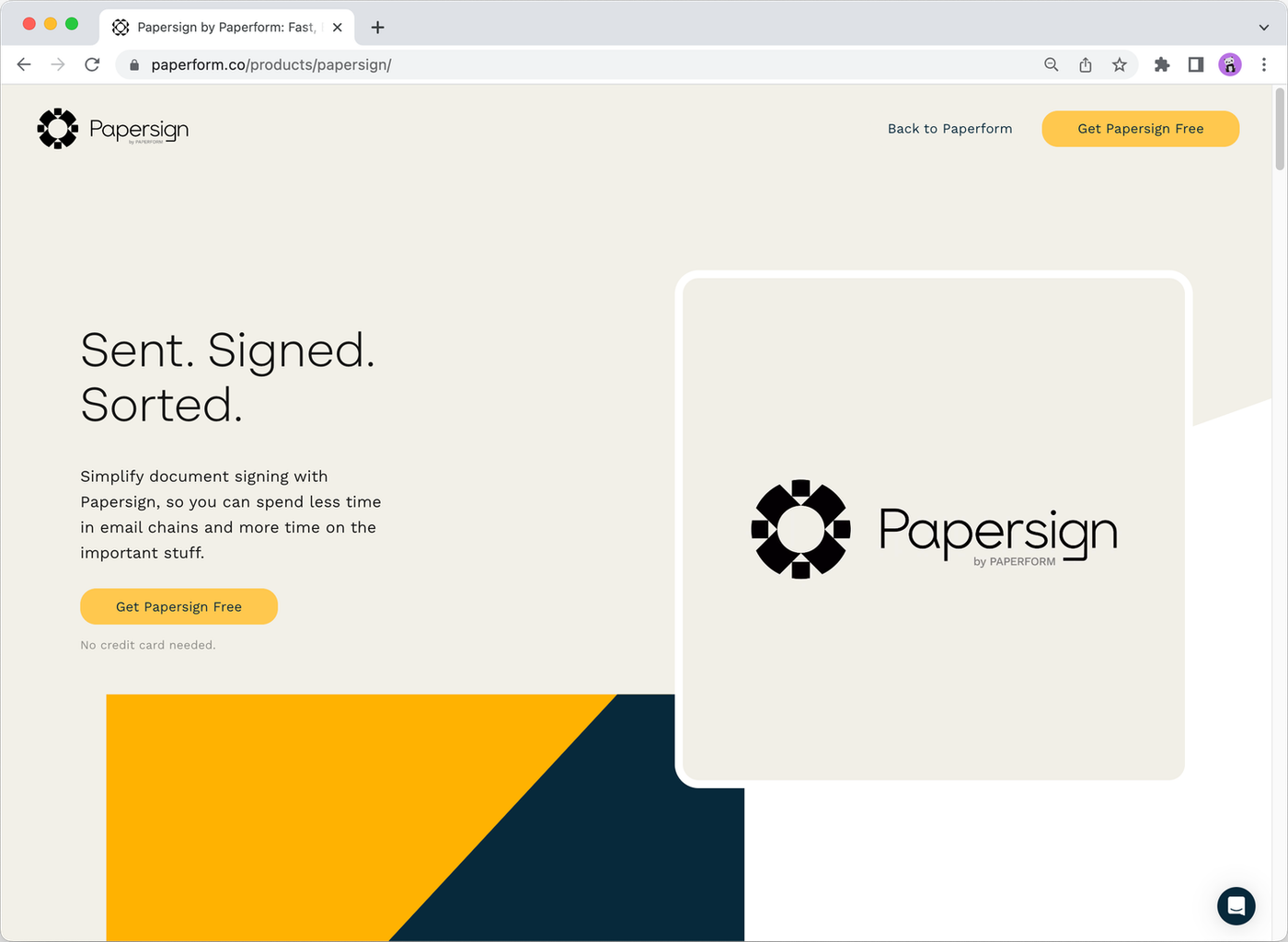 (Source: Papersign)
(Source: Papersign)Use it to: Easily capture eSignatures and automate your document workflows.
Papersign is a brand new eSignature solution from Paperform. It's a tool that simplifies document creation and signing, allowing you to free up time on the admin tasks that slow your recruitment processes down.
This eSignature tool is incredibly beneficial in the final stages of recruitment, empowering you to more quickly finalize employment contracts, and onboard new hires more efficiently.
Papersign integrates seamlessly with Paperform, so you can build powerful automation flows between your forms and documents.
For example, you can collect personal information with a form, populate your contract with those details, and automatically send it to the intended recipient.
Ready to give Papersign a try? Get started with our free plan, which includes 3 documents a month.
3. LinkedIn Recruiter
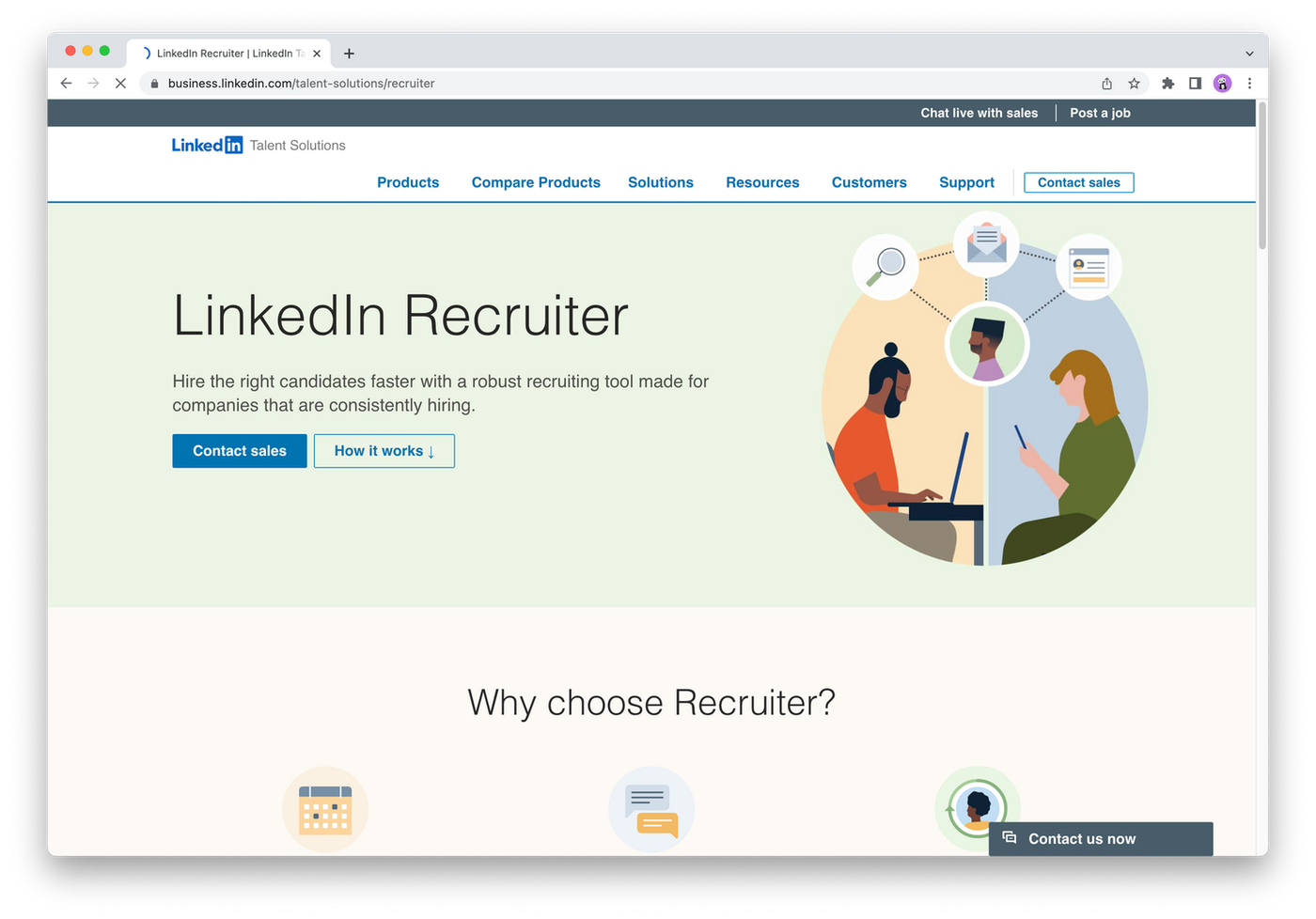 (Source: LinkedIn)
(Source: LinkedIn)Use it to: Find and evaluate qualified candidates.
Candidates and employers alike know the power of LinkedIn for the job search—and LinkedIn Recruiter takes things up a notch.
You can use the recruiting tool’s intelligent matching and advanced search filters to narrow down to the most qualified applicants for your open positions. From there, you can reach out to candidates (whether they’re actively searching or are passive candidates) using InMail. Used in combination with other automation tools like LinkedHelper, you can take advantage of bulk messaging and smart personalization to help you build the funnel.
LinkedIn Recruiter also has plenty of customizable templates you can use to improve your outreach. Plus, larger recruiting teams love LinkedIn’s collaborative approach that makes it easy to organise candidates, share profiles and understand candidates’ histories—all from one centralised platform.
Price: LinkedIn offers several versions of LinkedIn Recruiter to cover the needs of small businesses all the way up to enterprise companies, including Linkedin Recruiter ($835 per month) and the Recruiter Lite plan ($170 per month or $1,680 per year).
4. Textio
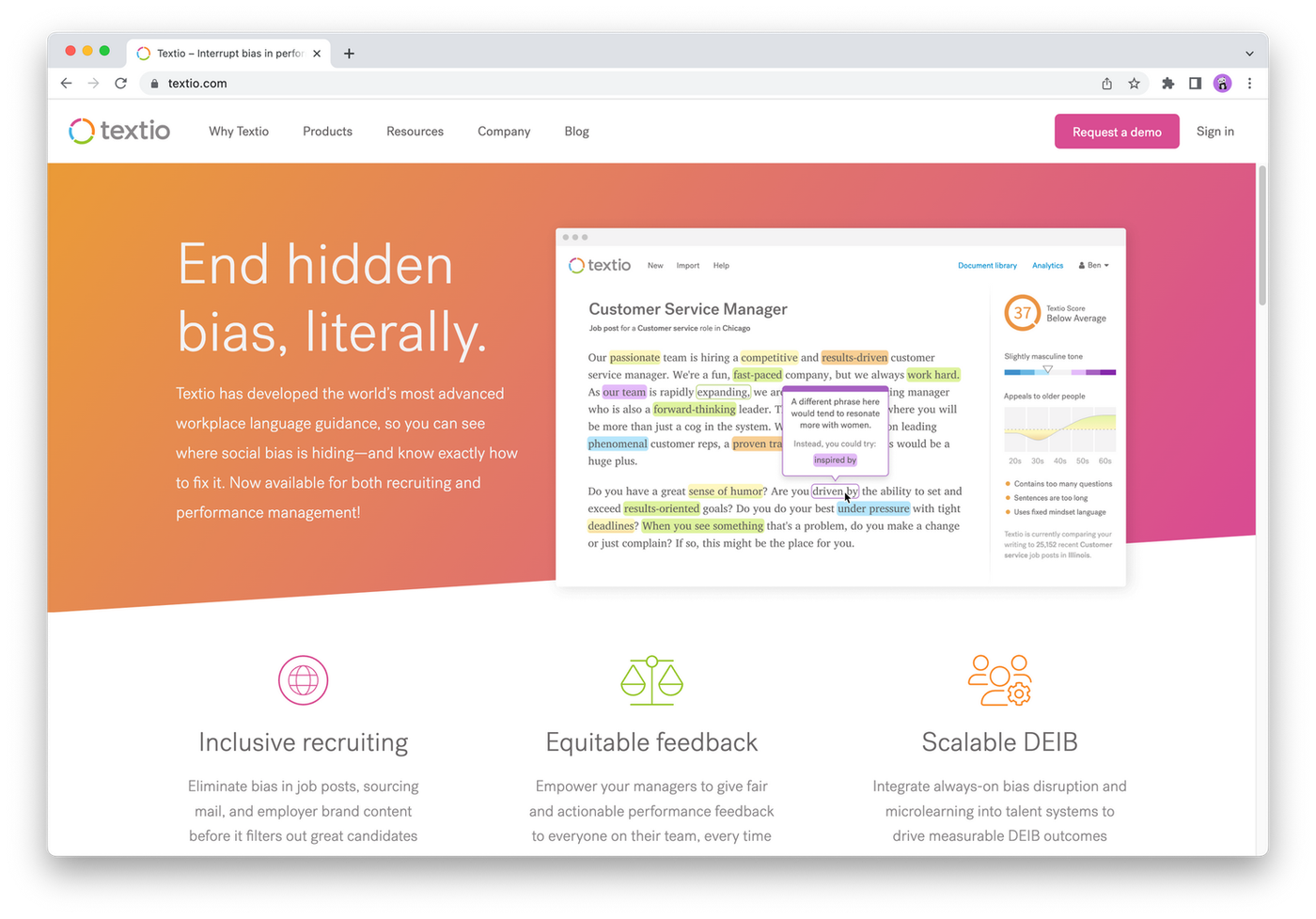 (Source: Textio)
(Source: Textio)Use it to: Write more inclusive and compelling job descriptions.
Job descriptions can quickly read like copy-and-paste versions of the same template, which doesn’t exactly draw your ideal candidate in. And even worse? Language can easily creep in that will exclude or discourage diverse candidates from even applying in the place.
Textio is a platform focused on providing guidance specifically for workplace language. That includes things like employee performance feedback, but also recruiting communications like job postings, emails exchanged with applicants, and even your employer brand content.
Textio will help you optimize your job descriptions and other messages as you write them. The platform uses data-driven and research-backed language guidance to detect and flag any unconscious bias in your writing (such as gendered phrases or corporate clichés). It’ll offer better alternatives to consider and give you a score as you type so you can easily see how you’re doing.
Textio works seamlessly with your existing apps and allows you to access guidance in whatever program you’re using—whether it’s Gmail, Workday, LinkedIn Recruiter, or elsewhere.
Price: Unfortunately, Textio doesn’t make its pricing publicly available. You’ll need to request a demo to find out more.
5. SmartRecruiters
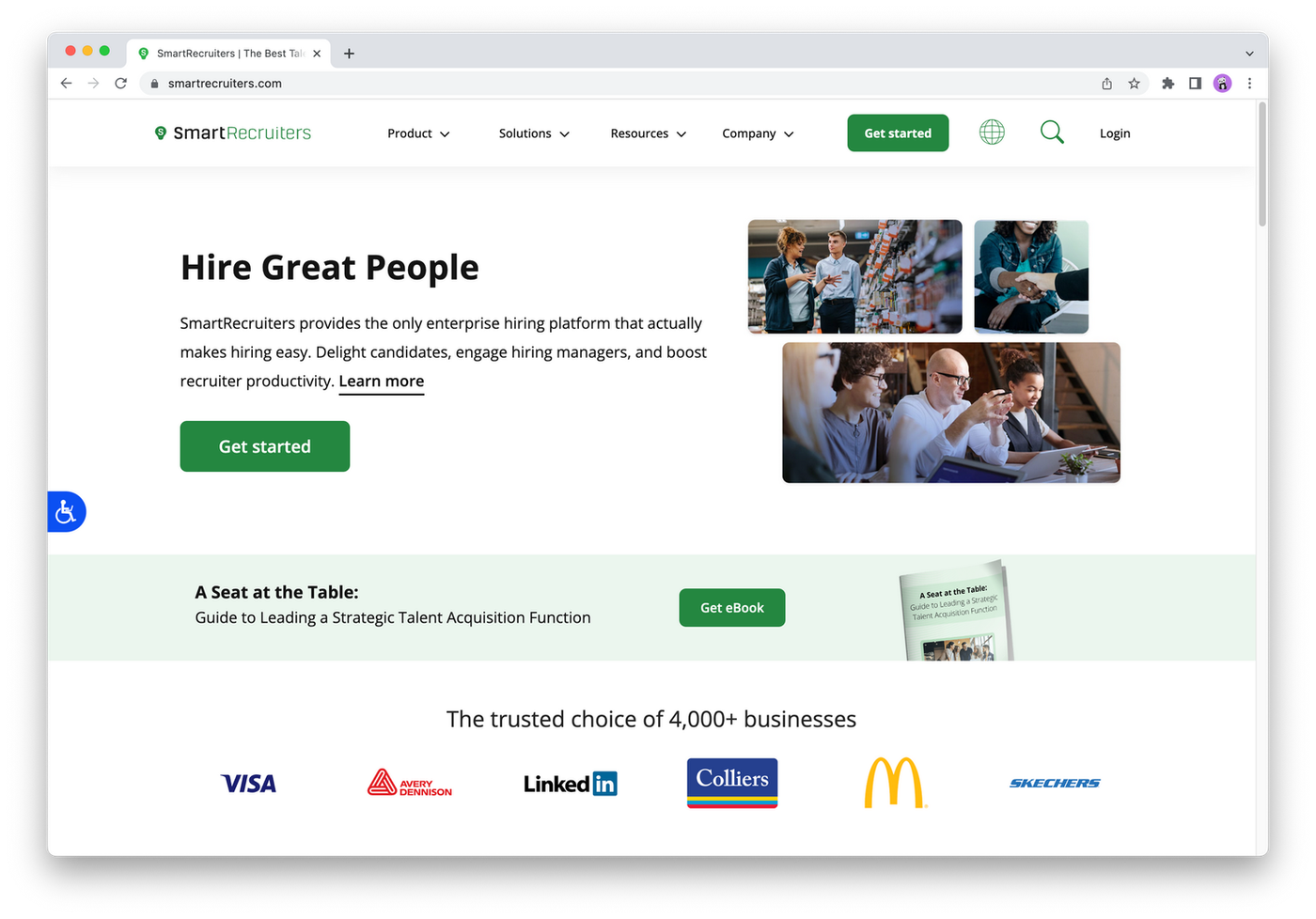
Use it to: Manage your entire recruitment process.
When it comes to comprehensive recruiting solutions, SmartRecruiters is often one of the top choices—particularly among enterprise companies.
As you might guess, the platform covers nearly every aspect of recruitment and hiring workflows, like job advertising and distribution and even employee onboarding. It uses advanced technology for a variety of features including chatbot recruiting and AI recruiting.
When it comes to capabilities, there isn’t much SmartRecruiters can’t do. It can help you build a more effective career site on your own website and even help you reach candidates using text messages.
Put simply, think of it as an applicant tracking system and a CRM all rolled into one—if it’s related to hiring, this platform can probably do it.
Price: Because SmartRecruiters is so customizable based on your needs, it also doesn’t have public pricing information. You need to contact the sales department to find out more about the price tag.
6. SourceWhale
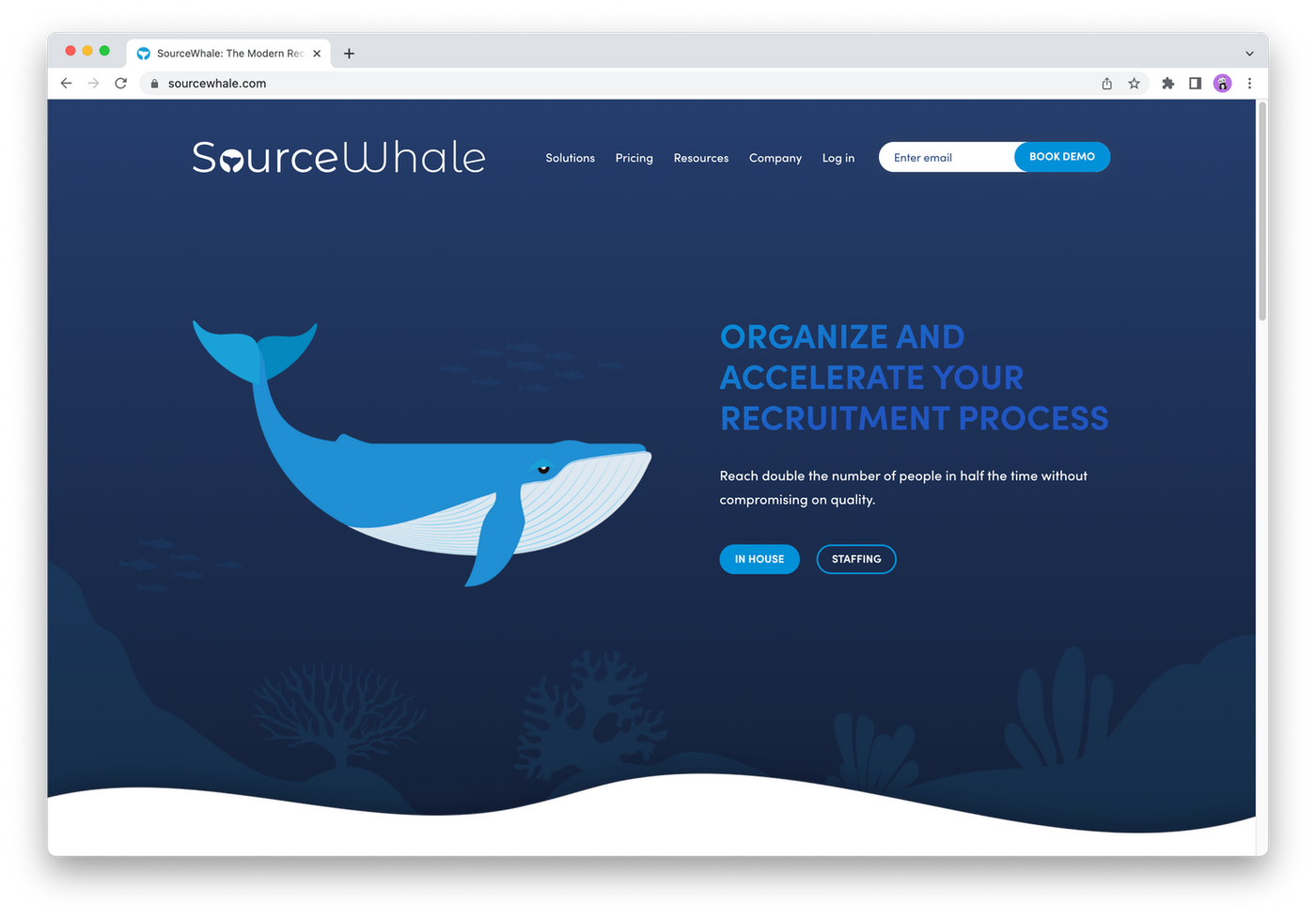
Use it to: Make the hiring process more integrated and collaborative.
There are a lot of tools involved in your typical recruitment workflow—from your email provider to your applicant tracking system. SourceWhale brings all of those together into a single recruitment workspace.
In one platform, you can pull together all of your different candidate channels and track your entire team’s activity so that your recruiting team can collaborate and work through your talent pools together.
When it comes to actually reaching out to candidates, SourceWhale also offers AI-powered personalized emails and messages that you can use to pique the interest of different applicants.
No more letting things slip through the cracks—SourceWhale helps you easily keep track of all of the moving parts of your hiring process.
Price: SourceWhale is priced per user and depends on the license type your team needs. You have to contact the sales team to find out how much you’ll pay per user.
7. Pymetrics
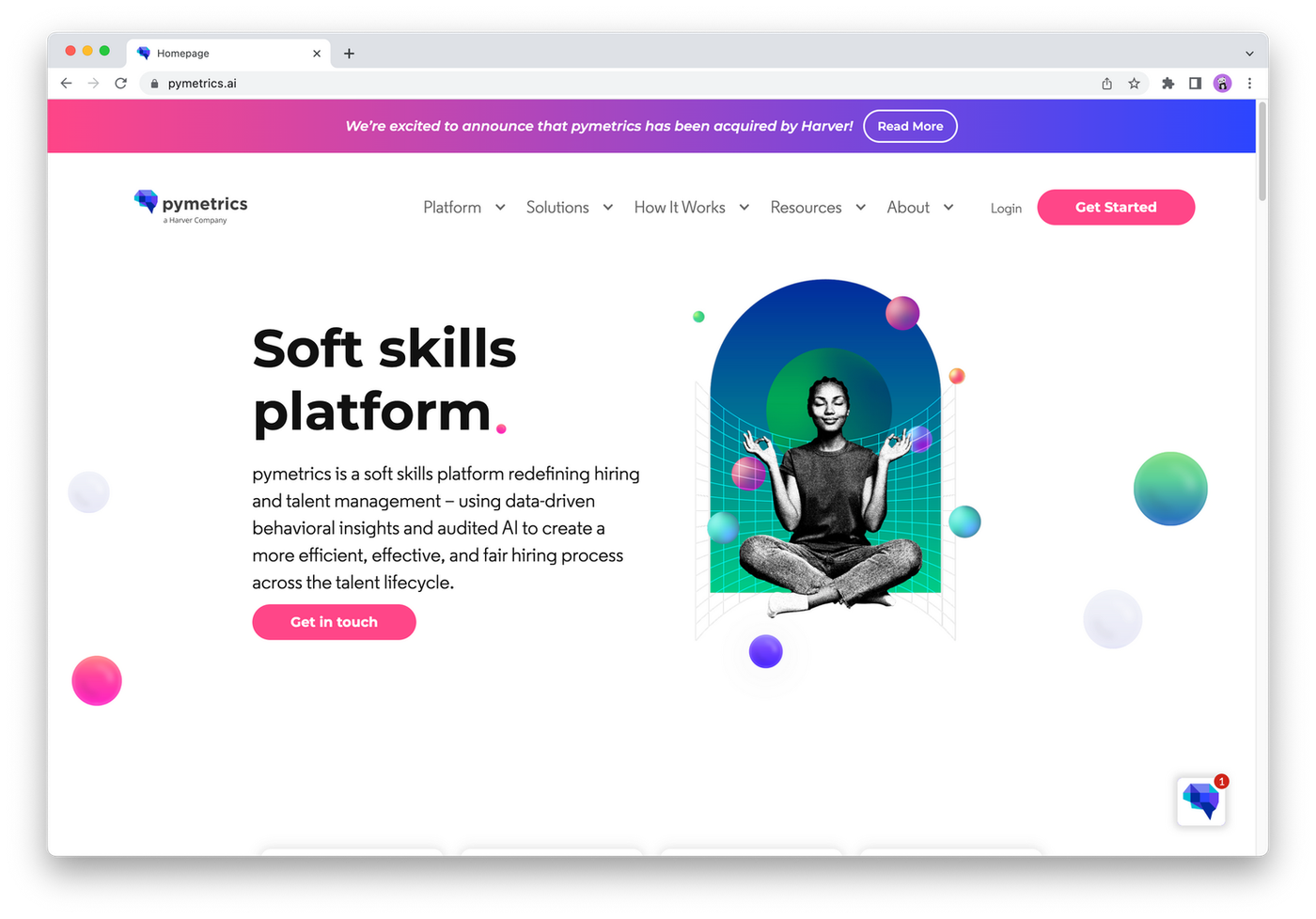
Use it to: Effectively and fairly evaluate candidates.
Deciding who should land an interview is tough—particularly when you feel like you have such limited information to go off of.
Pymetrics uses behavioural insights and AI to go beyond the humble resume and help you get a more holistic understanding of candidates, especially their soft skills. Job seekers complete various gamified behavioural assessments focused on digging deep and understanding a candidate’s true strengths and potential.
Applicants can use the platform to get a better understanding of what jobs and companies are the best match for them. But employers who use the platform also benefit from algorithms that will better help them identify and find top talent. Those algorithms are frequently tested for bias too.
If you’re tired of filing through resumes that are filled with the same accolades and filler words, Pymetrics is what you need to get a deeper grasp on what candidates bring to the table and build a more efficient and inclusive candidate screening step into your process.
Price: As yet another recruiting tool that doesn’t make pricing public, you’ll need to contact sales to find out how much Pymetrics costs.
8. iSmartRecruit
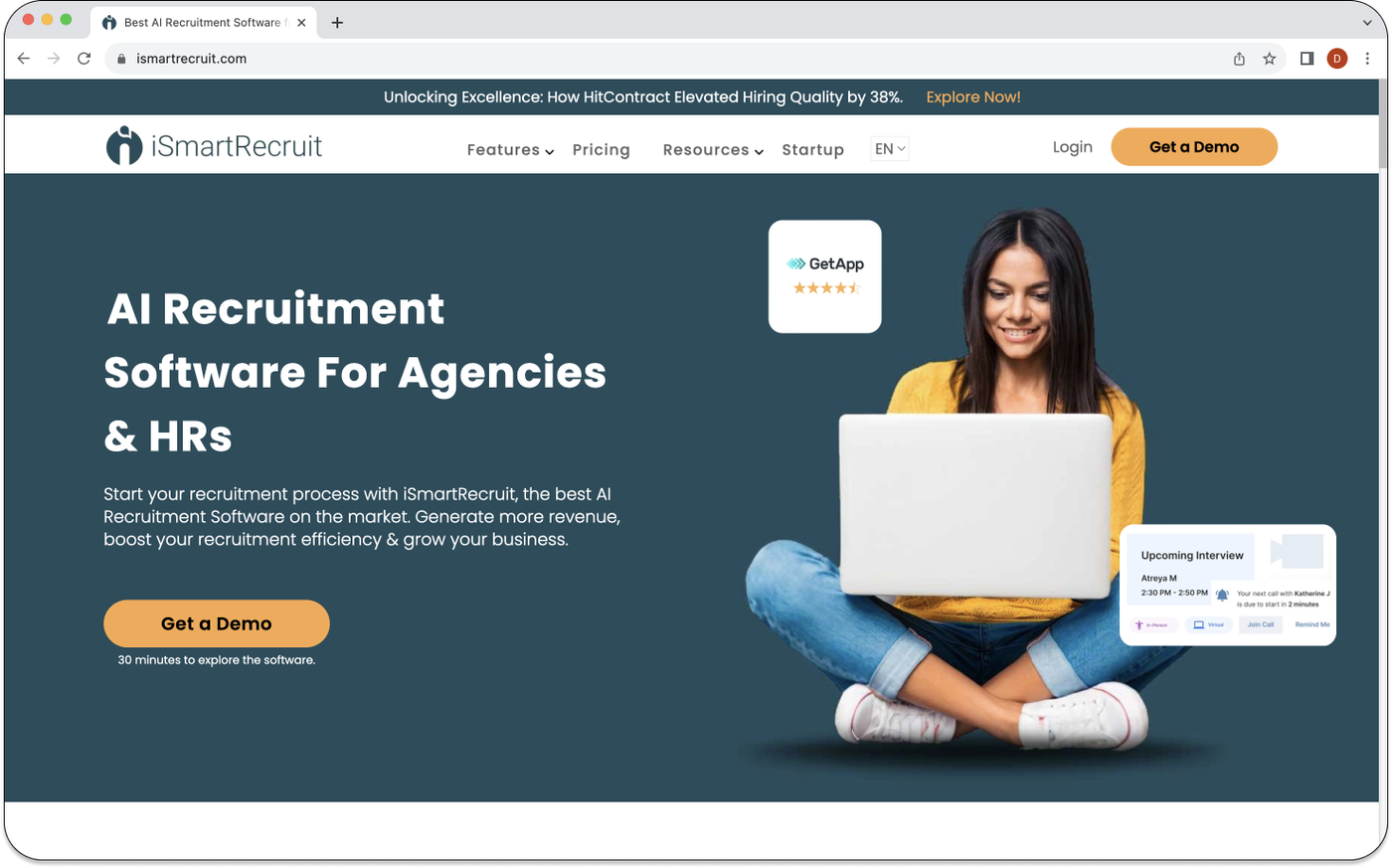
Use it to: Streamline and automate end-to-end recruitment workflow.
iSmartRecruit is a recruiting automation software that provides an AI-based applicant tracking system and Candidate/Client Relationship Management. It is specially designed for mass recruiters, HR teams, and staffing agencies who need to automate their recruitment cycle.
iSmartRecruit helps you eliminate manual and repetitive tasks in the process. The robust data analysis and reporting tools give you insights into your recruitment process and valuable KPIs to track against, so you and your team will know how to optimise your hiring strategies for even better results.
The AI-profile matching feature uses AI technology to suggest suitable candidates for each job. Also, the Chrome extension uses the profile scanner to import candidate profiles from social network platforms like Linkedin.
Pricing: iSmartRecruit doesn't have public pricing information. You'll need to contact their sales team at sales@ismartrecruit.com for a customised pricing model that best suits your team's needs.
Make hiring a little more hassle-free
Writing job descriptions. Finding the right job boards. Filtering applications and resumes. Screening applicants. Interview scheduling. Following up. The recruiting and hiring process is…well, a process. It’s not a quick task—it’s something that takes a lot of time, effort, and commitment.
But, whether you’re a small business or have a large recruiting team, recruiting and hiring don’t have to be such enormous drains on your hours and your energy.
Recruitment automation tools can transform your mundane and repetitive tasks into streamlined workflows that can even happen completely without you. Whether you want to easily schedule interviews with qualified candidates or set up an AI chatbot to answer frequent questions from applicants, automation can ease your own workload while also improving the candidate experience.
Try out a few of the tools on this list and watch as your existing recruiting process turns into a well-oiled system that’s way more efficient—and far more effective too.
Ready to streamline your hiring process? Get started with Paperform now.
Form a better life now.
Get your 7 day unrestricted trialHere is the ultimate list of online form builders, what they do best, their pricing, and examples to...
Independent retailers are some of the smartest operators in small business—but they’re forced to wor...
Independent retailers are some of the smartest operators in small business—but they’re forced to wor...
Looking for a worthy alternative to Zapier? In this guide, we've reviewed the best automation platfo...